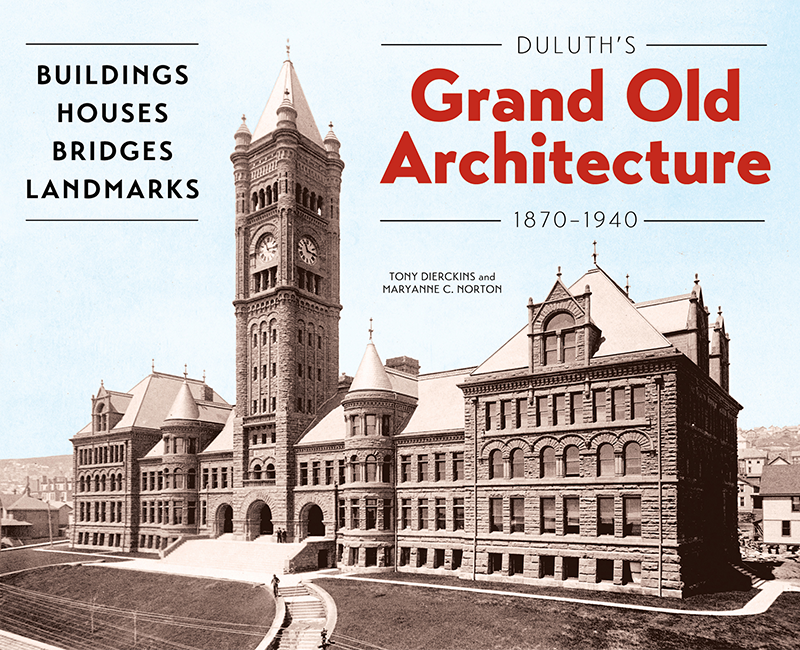Duluth's Grand Old Architecture

$60
Duluth’s Grand Old Architecture
Buildings, Bridges, Houses, Landmarks 1870–1940
by Tony Dierckins & Maryanne C. Norton
Duluth’s Grand Old Architecture explores the first seventy years of the Zenith City’s rich tradition of creating architectural statements. From the first brick buildings of the early 1870s through the Romanesque monuments of the 1890s and on to the Art Deco delights of the 1930s, readers will discover many of the remarkable structures—some lost, most still standing—where early Duluthians worked, shopped, prayed, played, learned, and lived. Meet the architects behind the buildings, learn about the people and companies who built them, get to know the families that lived in the city’s opulent homes, and trace each edifice’s history as you uncover the city’s storied past.
This big, beautiful book tells the stories of more than 300 existing and lost commercial and government buildings, schools, houses of worship, theaters, homes, bridges, and more.
Hardcover | 336 Pages | 425+ Illustrations | 11.625 x 9.25 inches
Praise for Duluth’s Grand Old Architecture
“I Love It! There’s perhaps no one who has done more to showcase and celebrate Duluth’s rich history and the structures and places that made us and that continue to define us than Tony Dierckins and the late Maryanne Norton.”
— Chuck Frederick, Duluth News Tribune
“Flipping through its pages had me pondering how Duluth residents used to build schools that looked like castles, how, in 1900, Duluth had three synagogues, serving mainly immigrants from Russia and eastern Europe, and how this little Hillside house I drive by almost every day was built in 1880 and used to be the carriage house of a mansion built by one of Duluth’s founding families. I can’t stop looking up sites on Google maps to see how they look now. I won’t win any awards for copywriting when I say it, but this book is really, really neat.”
— Beverly Godfrey, Perfect Duluth Day
about the authors
Maryanne C. Norton (1933–2018) worked as a librarian and archivist for the Marathon County Historical Society in Wausau, Wisconsin, before moving to Duluth in 1987. She served as the assistant director of the St. Louis County Historical Society, coauthored the books Images of America: Duluth, Minnesota and Lost Duluth, and received the Duluth Depot Foundation’s Historic Preservation and Interpretation Award.
Learn more about author and Zenith City Press publisher TONY DIERCKINS HERE.
